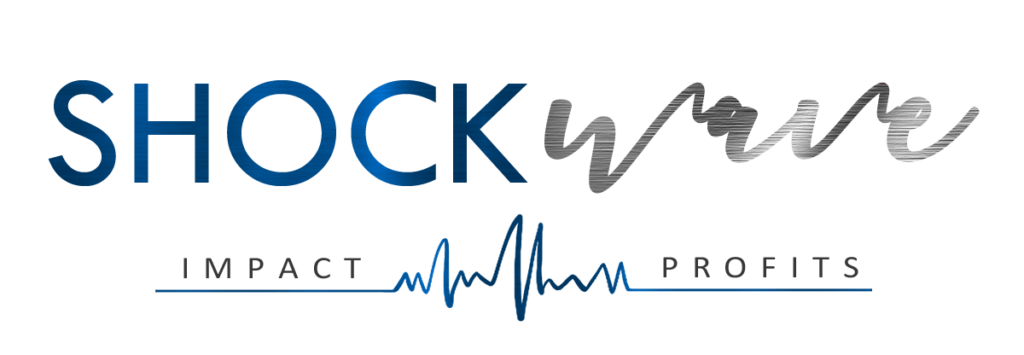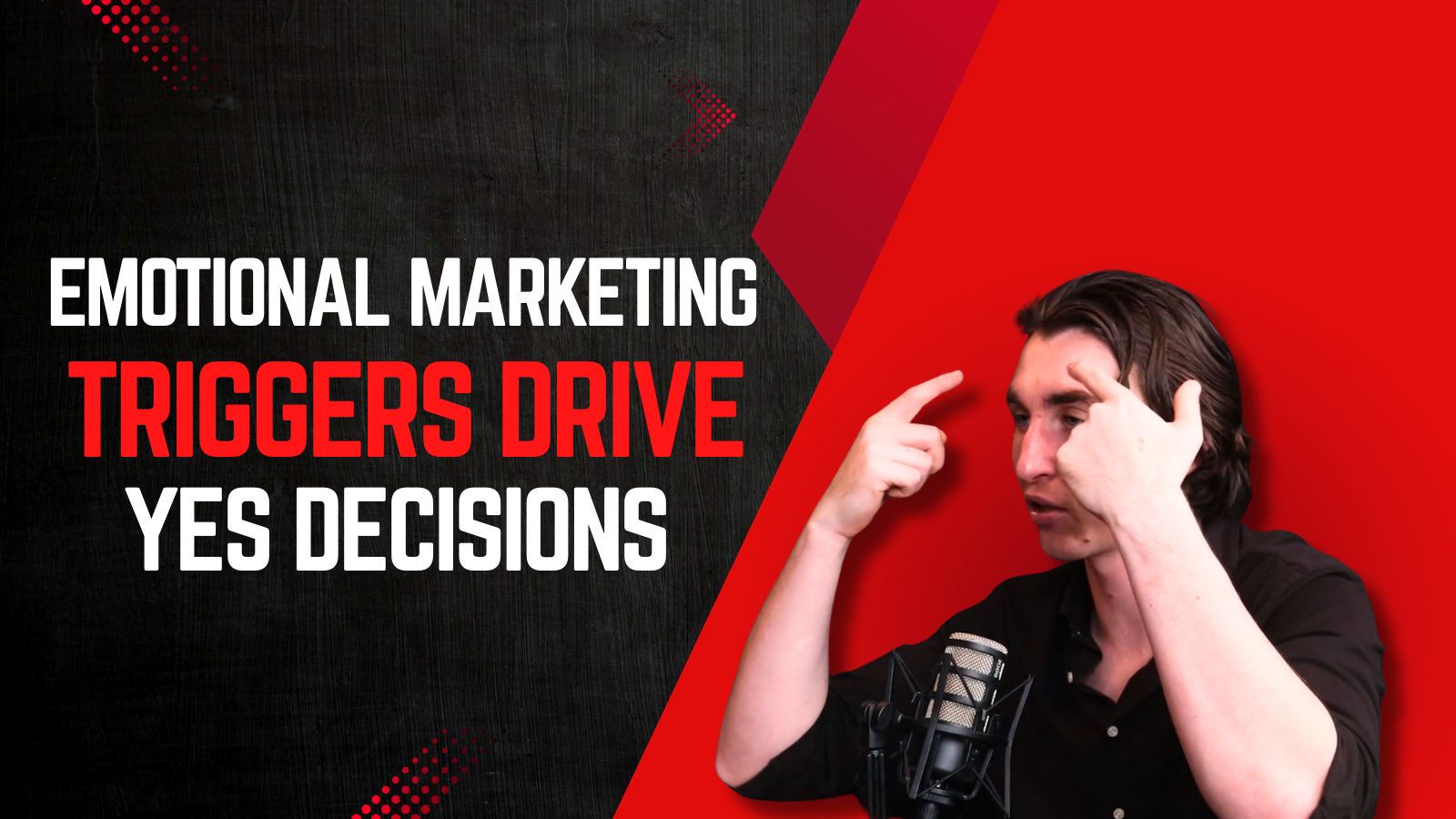Let’s say it loud and clear: People aren’t saying no because your product sucks.
They’re saying no because you haven’t hit the real emotional trigger that makes them believe.
Belief in you.
Belief in your offer.
And most importantly, belief in themselves.
In this Special Ops Podcast Episode, I sat down with Nick Verge to unpack what’s really happening inside a prospect’s brain when they hesitate, even when they desperately want the outcome you’re selling.
This goes deeper than price objections or “I need to think about it.” This is about how to craft messaging and marketing that bypasses logic and speaks straight to the real resistance.
If you’re tired of no’s from people who clearly need what you offer, this post is going to show you why. And more importantly, how to fix it.
👉 Hear the full breakdown with Nick Verge inside the episode
1. Frequency is the Foundation of Trust (But You’re Probably Doing It Wrong)
Most marketers treat “frequency” like a checkbox.
They run one email, two retargeting ads, maybe three follow-ups. Then they say: “If they wanted it, they would’ve bought by now.”
Nick Verge calls this out for what it is. Impatience and short-sighted thinking.
“Most business owners underestimate how long it takes for someone to trust a message, especially in mature markets.”
He points to Roy H. Williams’ “Three Times in Seven Nights Sleep” rule.
If someone doesn’t see your message at least three times within one week, you’re not even in their mental lineup. You’re background noise.
But here’s the kicker.
Repeating the same message doesn’t build trust. It builds fatigue.
What you need is frequency with variety.
Multiple angles. Multiple emotional triggers. Multiple story arcs. All pointing to the same product but from different lenses.
You can’t just show up more often. You have to show up better.
Think of your messaging like a song. A melody with different notes. If every message is the same, you’re playing one chord on repeat and calling it a masterpiece.
Instead, rotate:
- A heartfelt founder story
- A skeptical customer testimonial
- A proof-loaded email
- A use-case focused video
- A simple before-after breakdown
Same offer. Different frequencies. Different emotional keys.
Trust isn’t built through a megaphone. It’s built through resonance over time.
2. Weak Storytelling Is Killing Strong Offers
Here’s a truth most funnel-builders and copywriters avoid: logic does not sell.
People don’t make decisions based on your feature list or tech stack.
They buy when they see themselves inside a story. A story where someone just like them struggled, decided, and came out on the other side.
“There are 5 or 6 identity-based stories orbiting every offer. The ones that convert are the ones that make your buyer say: that’s me.” Nick Verge
If your ads and VSLs sound like a pitch deck, you’ve already lost them.
What works instead?
Build stories around each version of your ideal customer:
- The exhausted mom who’s tried every supplement
- The burned-out agency owner who’s tired of churn
- The 6-figure solopreneur afraid to hire because last time it blew up in their face
Then wrap your pitch inside their emotional journey.
This isn’t just about tone. It’s about identity.
When a story mirrors the internal chaos your buyer is experiencing, it feels like relief.
That’s when they lean in. That’s when they believe. And that’s when the yes happens almost automatically.
3. Most Copy Ignores the One Thing That Matters: Emotional Relevance
Let’s get tactical.
If you’re still writing copy that starts with “Are you tired of…” or “Discover the secret to…”, stop reading and delete your headline.
Why? Because that format treats your buyer like a stranger. Like someone you haven’t taken the time to understand.
Nick laid it out plainly:
“Your messaging should sound like you pulled a line straight from their internal monologue. If it doesn’t, you’re talking past them.”
Here’s what real emotional relevance sounds like:
- “You hit six figures last year, and it still feels like you’re sprinting on a treadmill.”
- “You know the moment your Stripe notification hits… and it’s not what you were expecting.”
- “You told yourself this was the year you’d finally fix your backend. But here you are again, duct-taping a broken system.”
This is more than clever copy. This is precision empathy.
It tells the buyer, “I see you.”
And more importantly, “I get what you’re hiding from everyone else.”
That’s when the guard comes down. That’s when your offer becomes the obvious next step. Not a risk, but a relief.
4. Identity Conflict is the Hidden Killer of Conversions
Most buyers don’t say no because they disagree with your product.
They say no because your product doesn’t align with who they believe they are.
Or worse, it threatens who they’re trying to become.
Verge explained it like this:
“Identity is everything. If your message doesn’t reinforce the future self your buyer wants to step into, they’ll reject it. Even if it’s the right solution.”
Let’s say your target customer is a seasoned entrepreneur who values autonomy.
If your copy positions your program like hand-holding or babysitting, it’s a mismatch. No buy.
On the flip side, if your offer speaks to their desire to be seen as a category leader or mentor, someone with leverage and vision that aligns with their evolving identity. Now you’ve got their attention.
Here’s a cheat code: Sell the next version of them.
Use lines like:
- “This isn’t for beginners. It’s for operators who know their next move needs to be a quantum leap.”
- “This is for the person who’s done playing in traffic. You’re ready to own the road.”
- “You’re not here to learn. You’re here to lead.”
Make the message about who they’re becoming. Not just what they’re getting.
5. Overexposure Without Depth Erodes Trust
There’s a dangerous assumption running rampant in performance marketing right now.
It goes like this: “If they’ve seen the ad five times and haven’t bought, they’re not a fit.”
Wrong.
In today’s hyper-aware market, people expect you to follow them around. They expect retargeting. They expect the pitch.
Which means repeating the same shallow message over and over again doesn’t build familiarity. It builds skepticism.
“Repetition without variation makes people tune out. Or worse, distrust you.” – Nick Verge
So what’s the fix?
Add depth with every exposure. Every time someone sees your brand, make them think something different.
If Ad #1 showed social proof, Ad #2 should address a key objection.
If Email #1 told a customer success story, Email #2 should walk through a worst-case scenario your product helps them avoid.
If your first follow-up call was about features, the second one should be about how their identity aligns with the transformation.
Your message should evolve as the prospect moves deeper. That’s how you build belief.
You don’t need to shout louder.
You need to show them more angles of the truth.
Final Thought: People Don’t Say No Because of Logic. They Say No Because They Don’t Believe Yet.
If your offer is strong…
If your product solves a real problem…
If your testimonials are legit…
And people are still saying no?
That’s not a conversion issue.
That’s a psychological misfire.
Fix it by stacking emotional resonance, storytelling, identity alignment, and strategic frequency.
Because at the end of the day, people don’t need more information.
They need to feel understood.
👉 Hear the full breakdown with Nick Verge inside the episode
Once you understand the real reason people hesitate, flipping that no into a hell yes becomes effortless.

